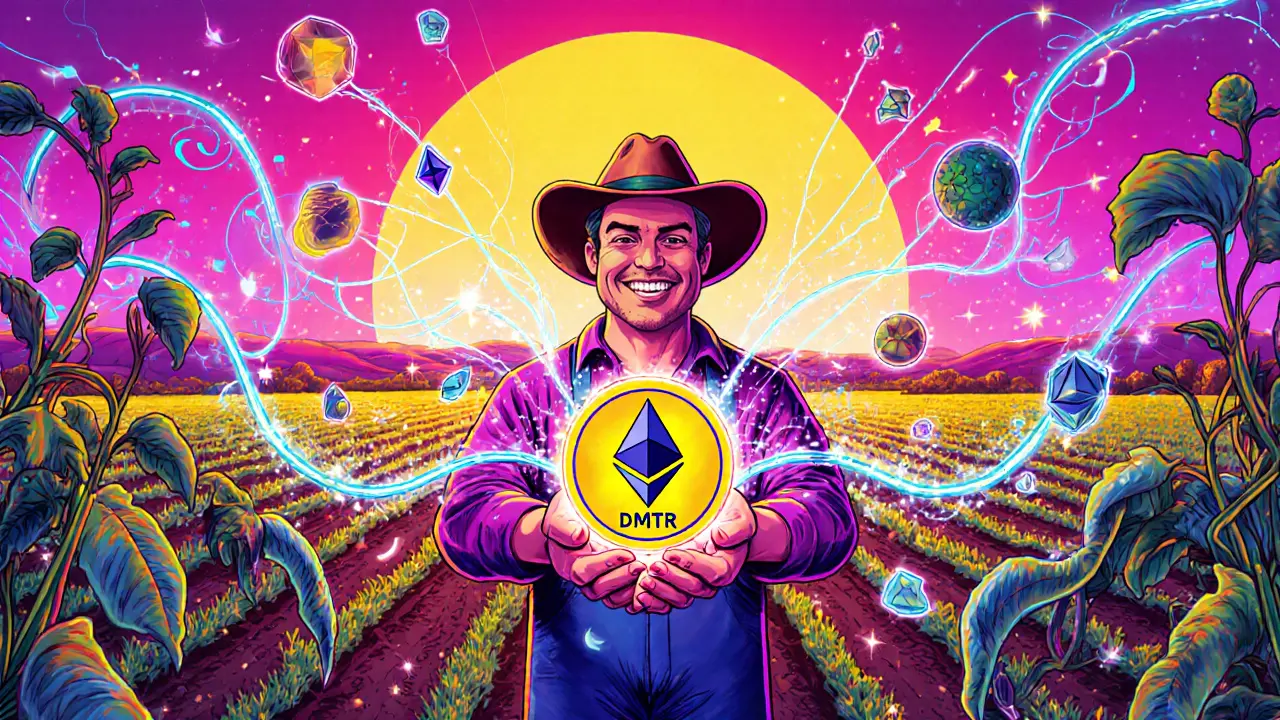Dimitra DMTR (DMTR) – Token Overview, Airdrops, and DeFi Use Cases
When working with Dimitra DMTR, a blockchain token that blends governance, utility, and community incentives. Also known as DMTR, it powers several decentralized finance projects while offering holders voting rights and revenue sharing.
Tokenomics, the set of rules governing supply, distribution, and burning mechanisms is the backbone of DMTR. The model caps total supply at 100 million, allocates 30 % to early community members, 20 % to liquidity provisioning, and reserves 10 % for future development. A quarterly burn tied to network usage reduces circulating supply, creating scarcity that can boost price over time. Understanding these attributes helps investors gauge long‑term risk and reward.
Key Concepts Behind DMTR
Airdrop, a distribution method where free tokens are given to qualified users plays a crucial role in DMTR’s growth strategy. Past drops targeted Stacks holders, DeFi stakers, and active community participants. Eligibility typically hinges on wallet activity, staking volume, or holding specific partner tokens. By rewarding engaged users, the airdrop boosts network effect and encourages liquidity provision on supported DEXs.
DeFi integration is another pillar. Decentralized Finance, the ecosystem of open, permission‑less financial services built on blockchain lets DMTR holders stake their tokens for yield, provide liquidity in automated market makers, or borrow against collateral. Staking contracts lock DMTR for defined periods, offering APY ranging from 5 % to 18 % depending on lock‑up length. These incentives align user interests with network security and liquidity depth.
Token vesting schedules shape how new DMTR enters the market. Vesting, the process of releasing tokens over time to prevent sudden supply shocks can be cliff‑based, linear, or hybrid. For example, the development fund follows a 12‑month cliff then linear release over two years, ensuring the team remains motivated while protecting investors from abrupt sell‑offs. Knowing vesting terms helps traders time entries and exits more effectively.
Gas fee optimization matters whenever you move DMTR on Ethereum or compatible chains. By timing transactions during off‑peak blocks or using layer‑2 solutions, users can cut costs by up to 70 %. Tools like gas trackers and fee‑predictors make it easier to schedule swaps or staking events when the network is idle. Lower fees increase net returns, especially for frequent stakers.
If you’re looking for a quick snapshot of Dimitra DMTR, the token combines a clear supply cap, community‑first airdrops, and versatile DeFi utilities. Below you’ll find articles that break down exchange reviews, passive‑income guides, regulatory updates, and more—each touching on one of the core elements we just covered. Dive in to see how DMTR fits into the broader crypto landscape and which strategies might work best for your portfolio.
Dimitra (DMTR) Crypto Coin Explained: Features, Tokenomics & Use Cases
Discover what Dimitra (DMTR) crypto coin is, how it works on Ethereum, its tokenomics, staking rewards, and real‑world agricultural uses like carbon credits and farm services.
